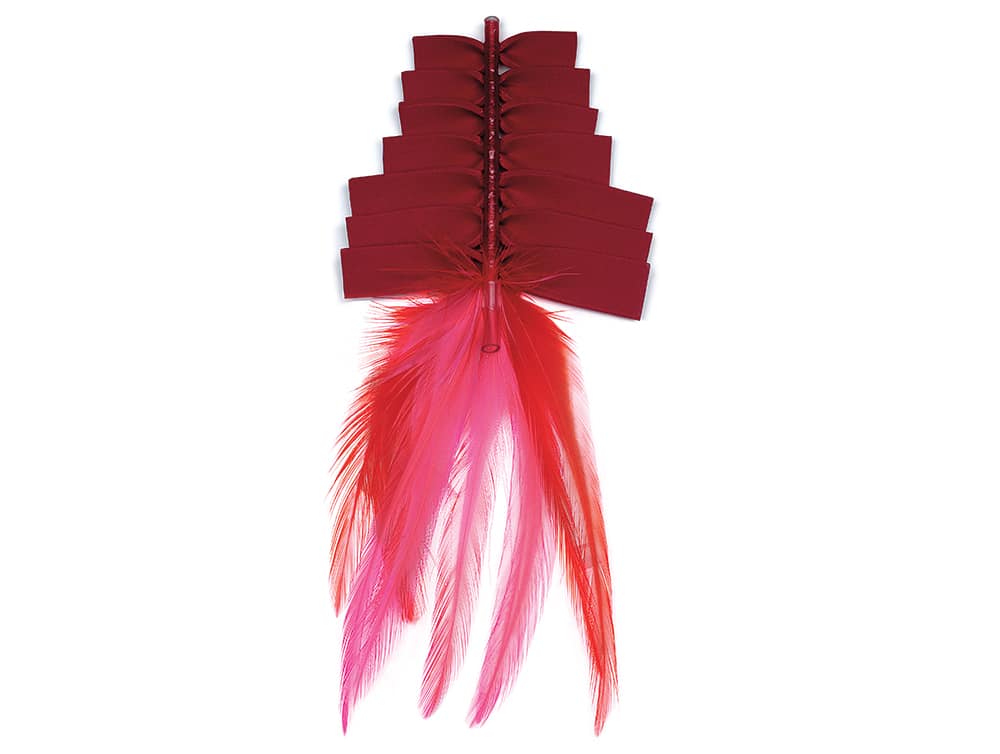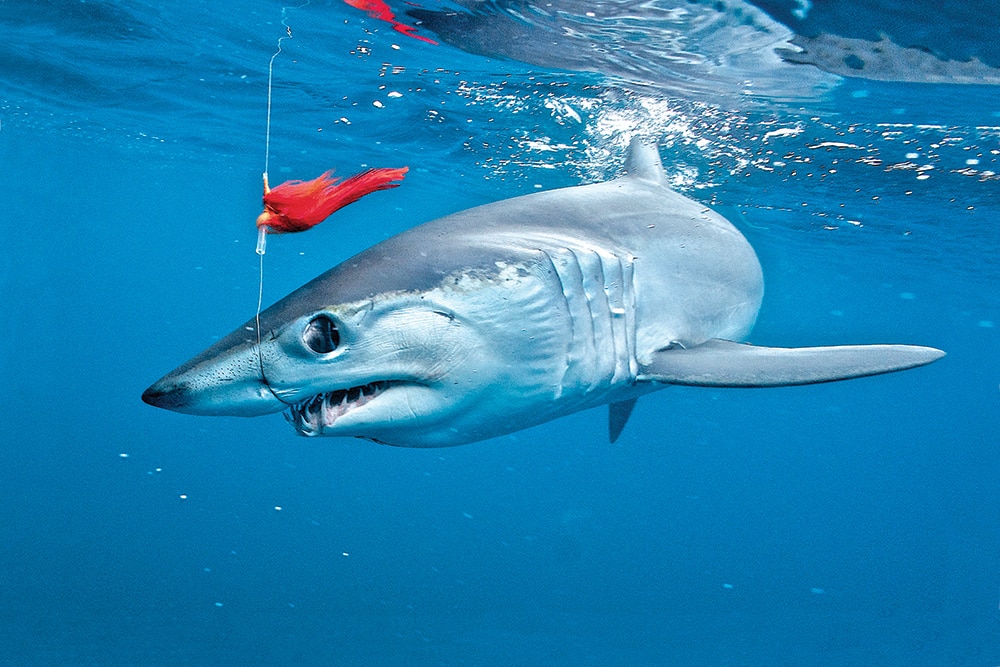
To my knowledge, Billy Pate was the first person to catch a mako on a fly within the specifications of the International Game Fish Association. To do it, in 1984, the legendary angler traveled to New Zealand. But today, thanks to San Diego-based Capt. Conway Bowman of Bowman Bluewater, anglers don’t need to get their passport stamped to accomplish this feat.
In the early ’90s Bowman came across a book written by Nick Curcione that mentioned fishing for mako sharks off the coast of California. Up until that point, there really wasn’t much saltwater fly-fishing going on in San Diego, but the thought of catching one of these magnificent creatures on a fly was irresistible. Conway had a 16-foot aluminum skiff at the time, and during the summer, seas off the San Diego coast were relatively calm. It was in this boat that Bowman began experimenting and exploring. Initially, the problem he faced was where to start — it’s a very big ocean and he’d never even seen a mako much less hooked one.
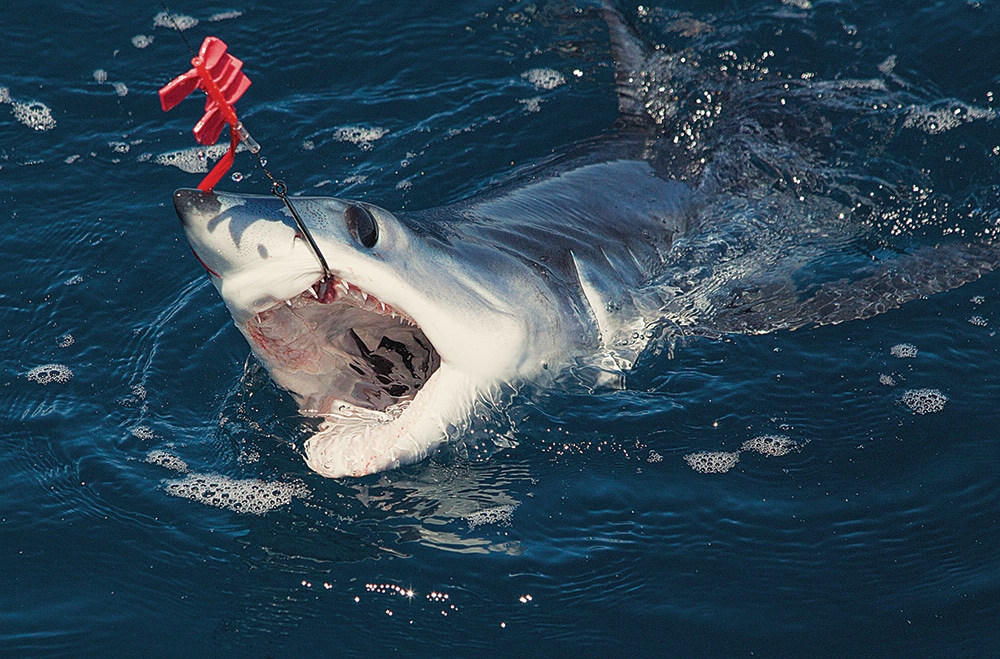
He figured the most logical way to launch his quest was to ask the local commercial fishing captains. They knew the ocean and many of them actually targeted makos to sell. Before too long, Bowman ran into a neighbor named Capt. Lou Foder, who happened to be a commercial lobster fisherman. Lou fished makos when lobsters weren’t in season and was willing to share his knowledge.
The reason behind a commercial fisherman (most are normally tight-lipped) telling a recreational fishing kid about where makos hung out, their range and feeding patterns was pretty simple. “He thought I was an idiot,” Conway says. “And why wouldn’t he think that? Here was a kid who wanted to run out into the Pacific in a tiny boat and try to catch a mako shark on a fly rod and then release it.” None of this made any sense to Lou, but he liked Conway and figured he’d humor him a bit since he certainly wasn’t a threat to his commercial fishing business. At times Lou allowed Conway to slip into his chum slick to watch him work the sharks to the boat. Today Conway is the first to admit that 90 percent of his knowledge of the best tides, moon phases, water temperatures and seasons for mako sharks came from Lou.
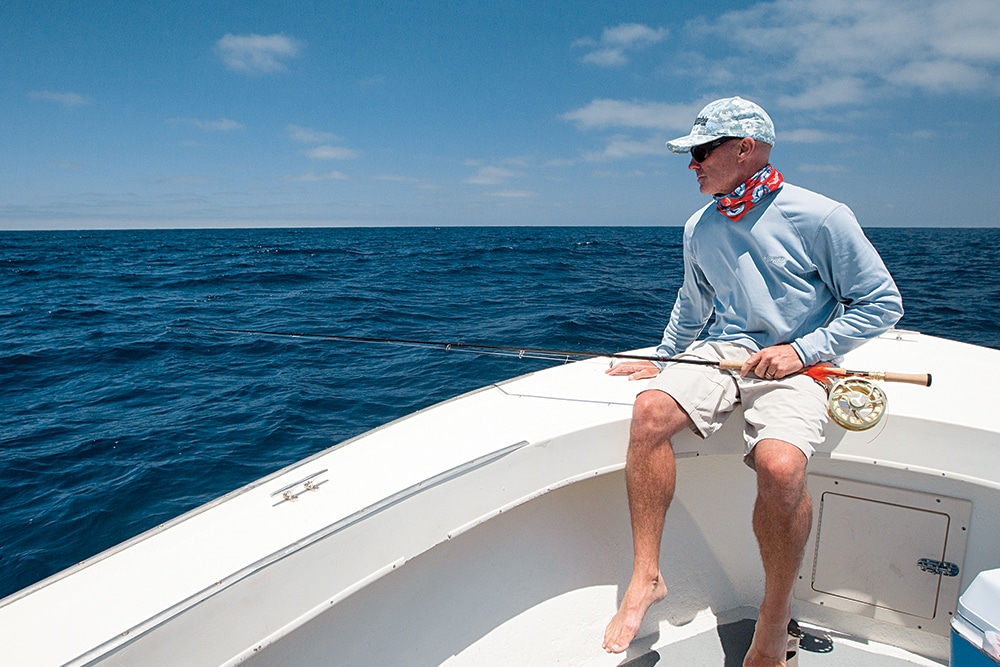
During those early years, Conway found that the best chum was scraps from local fish markets, and it wasn’t a problem for them to freeze their trash in five-gallon buckets for him. The best mako fishing was only a few miles offshore, so there was no need for a supersize boat. Yet the 16-foot aluminum skiff was a bit on the light side. There were rips and ledges that the makos traveled on a regular basis, and the plan was simply to find a specific spot that looked fishy, hang the frozen chum bucket over the side, drift and wait.
The most amazing aspect of San Diego’s mako fishery is that most of the sharks are in the 50- to 150-pound range — perfect for fly rods. Every so often, a monster will appear in the chum, and Conway has hooked makos close to 1,000 pounds. You don’t land a lot weighing more than 300 pounds, but the potential is always there. Tackle is pretty simple. A 12- to 14-weight fly rod and a quality offshore reel with a weight forward line and 50- to 80-pound braid for backing will work just fine. The flies are the size of small chickens, but casts don’t have to be very long because makos fear nothing — not even the boat. They are the top of the food chain, and anything that smells good is worth investigating. They’ll swim right up and hang around the boat for as long as it takes to get themselves hooked.
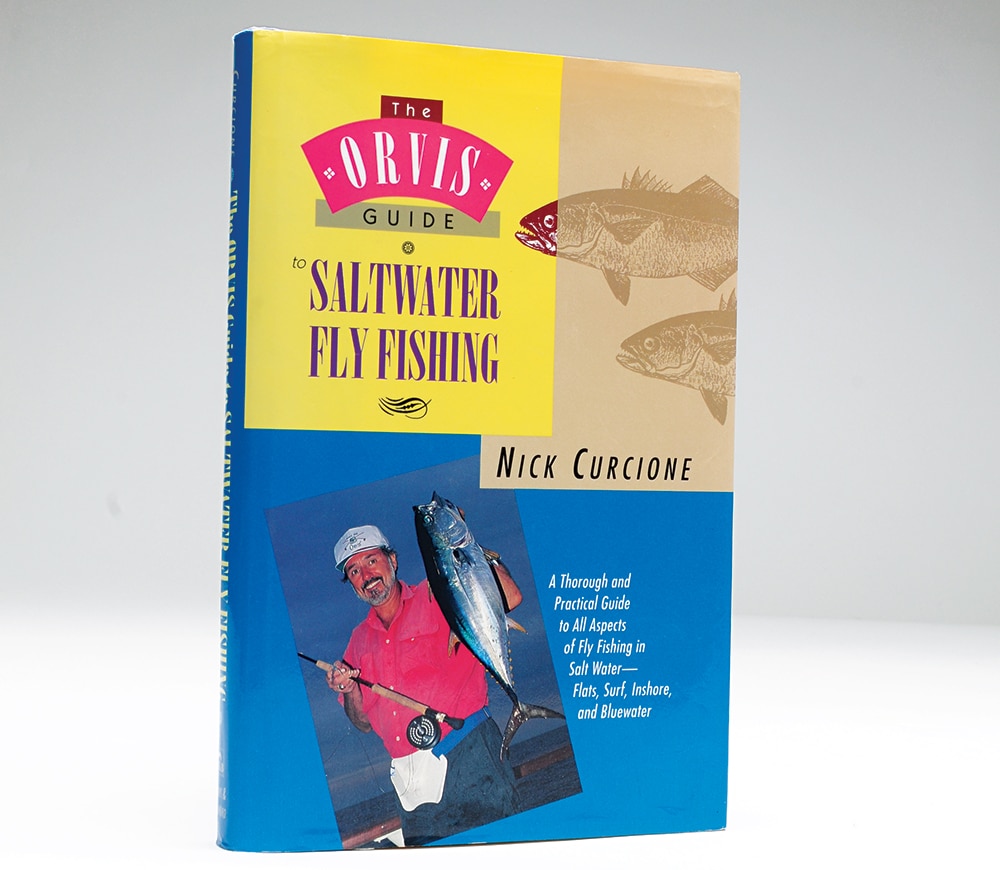
During the last 20 years, Conway has done a lot of experimenting with flies and rigging. The end result is a bright orange tube fly with a 69-pound single-strand wire shock and a huge barbless hook. Anglers are welcome to use IGFA specifications, but none of the makos are going to be killed, even if they are a record, so there’s no harm in adding on a little extra wire. I was amazed and a bit intimidated by the size of the hook, but Conway explained that the 10/0 bite stuck nicely in the corner of the jaw and was easily dislodged with his custom “dehooker.” Years ago and out of necessity, Conway and partner Dave Trimble placed a heavy metal, open loop on the end of a gaff handle that fit right around the hook and easily disengaged it, without the need for anyone’s hands getting into harm’s way. Today these release “gaffs” are manufactured commercially and are a must for anyone who enjoys sport fishing for sharks and appreciates keeping his extremities in one piece.
The progression to tube flies was also logical — it let them use the fly again. A standard fly rarely survived a stint in a mako’s mouth, and the tube allowed the feathers to ride up the leader and live to fight another day. It’s not unusual to hook a half-dozen makos in a day, and the fly costs can mount up pretty fast if you’re the guide.
The best part of this story is that Lou and Conway remained friends over the years. One day, Lou walked over to Conway’s house and announced, “I want to do what you do.” Lou had spent most of his life as a commercial fisherman and had reached a point where he simply couldn’t justify killing these beautiful animals anymore, no matter how much money was in it. Suddenly the student became the teacher. Conway taught Lou about fly rods, rigging, keeping customers happy, etc., and gradually Lou took over Conway’s part of Bowman Bluewater’s charter business.
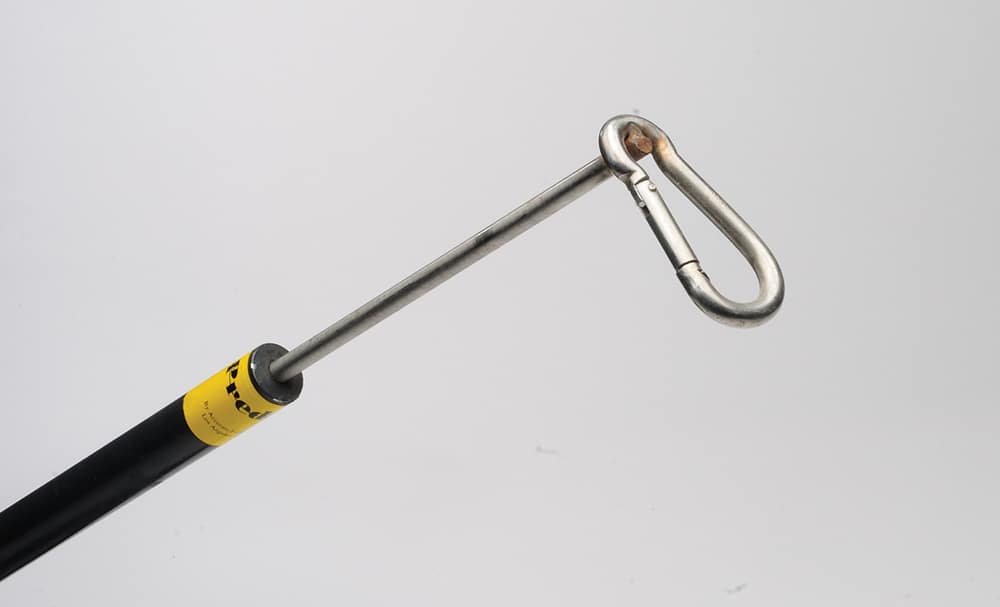
I fished with Lou and Conway last July and had a blast. Lou runs a 26-foot Parker, the same rig that he uses for his commercial lobster business, and it has adapted nicely to fly-fishing. Mako season runs from June through October, and Lou, Dave Trimble and several other San Diego guides are booked pretty regularly. Conway is usually off somewhere hosting his TV show, Fly Fishing the World, but he joined Lou and I for a busman’s holiday, so to speak. We all met at the Dana Landing Marina on Mission Bay, and 20 minutes later we were fishing. Once the drift begins, there’s no way to predict how long it will take for a shark to pick up the scent and work its way up the chum line — it could be five minutes or two hours, but that’s fishing. As we rigged up two fly rods, Conway pulled out his secret weapon — he called it the “Z Man Mako Toad”— and unveiled it with great fanfare.
I’m a big fan of toad flies and I’ve caught just about everything that swims on them, but this creation by Zino Nakasuji was outstanding. The head was made out of strips of foam, and the tail was simply a cluster of orange and pink feathers. It was a tube fly, of course, and it floated nicely on the surface when at rest. I have no idea what it looked like in the water, but the makos loved it. They would follow it back and forth just like a strip of tuna belly, snapping at it repeatedly. It was hysterical to watch. One mako caught it while we were teasing it, got hooked, ran off 50 yards of line, spit the hook and then followed the fly all the way back to the boat and ate it again. Conway says it took Zino a number of tries to get the pattern, size and balance just right, but the end result is perfect. Another of Lou’s tricks was his teaser plug. He took a clear 228 Sebile Magic Swimmer, removed the hooks and hand-painted it orange. On the few occasions that a mako lost interest before getting hooked, Lou would tease it back to the boat with the plug. These guys have their mako fly-fishing program fine-tuned, and it’s extremely effective. To my knowledge, San Diego is literally the only place in the world that supports this unique fishery.
